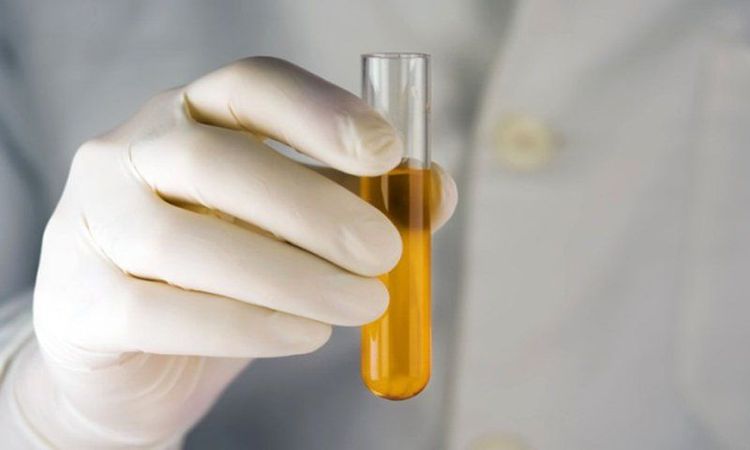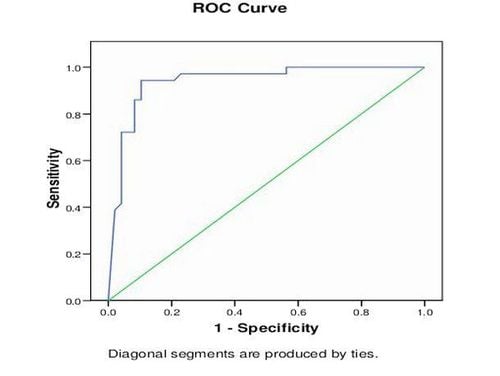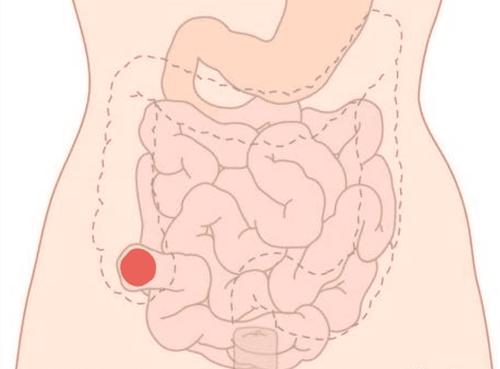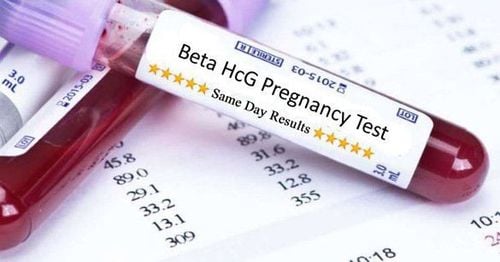This is an automatically translated article.
Tuberculosis is caused by the bacteria Mycobacterium tuberculosis and usually affects the lungs. The ability to spread the disease is very strong from person to person through the air when a person with TB coughs, sneezes or spits. Therefore, it is necessary to proactively test for TB for early diagnosis, which is necessary before the bacteria have damaged organs, especially high-risk groups.
1. What is tuberculosis?
Tuberculosis is an infectious disease caused by the bacterium Mycobacterium tuberculosis. The disease usually affects mainly the lungs, sometimes spreads to other organs, and the severity is often severe.
TB bacteria are spread from person to person through tiny droplets released into the air through coughing and sneezing. When a normal person gets infected, on the basis of weakened resistance, germs will multiply and cause disease. The damage to organs from TB is irreversible. In the lungs, even though the treatment controls and destroys the bacteria, the lung parenchyma and pleura can still have long-term sequelae, causing the patient to have difficulty breathing, fatigue, cough, and sputum.
In countries that are not endemic areas, migrants are always screened for TB. In contrast, in an endemic setting, any pulmonary involvement or respiratory symptoms, the diagnosis of pulmonary tuberculosis should be confirmed or excluded.
Once diagnosed with TB, the treatment needs to be strictly adhered to the regimen and periodically checked. When this is done, TB control will be successful as well as reducing the risk of transmission to family members and the community.

Vi khuẩn Mycobacterium tuberculosis gây bệnh lao hiện nay
2. How are TB tests done?
There are many TB tests used to diagnose TB, depending on whether the subject is being diagnosed or suspected to have the disease. Therefore, the choice of which test to perform depends on the doctor's decision and examination.
2.1 Diagnostic test for pulmonary TB The doctor will suspect TB germs in the lungs – the most common organ – when a patient goes to the doctor because of persistent respiratory symptoms.
The first diagnosis of pulmonary tuberculosis is based on chest x-ray to look for lesions in the lung parenchyma suggestive of tuberculosis.
In addition, sputum samples collected at the same time or over several days will also be used to check for the presence of TB bacteria.
These tests are important in helping to confirm the diagnosis, determine the most effective treatment for the patient, and plan infection prevention for the patient's family and community.
2.2 Diagnostic Tests for Extrapulmonary TB Several tests can be used to confirm when extrapulmonary TB is suspected, such as pleural TB, pericardial TB, meningococcal TB, bone and joint tuberculosis, and intra-abdominal visceral tuberculosis. abdomen, reproductive organs.
These tests include:
Computed tomography, magnetic resonance imaging, or ultrasound of the affected body part Endoscopy examines the internal body cavities with a long, thin tube with a light source and receiver mounted at the top of the tube. The endoscope can be inserted through a natural opening such as the mouth or anus or through a small cut in the abdominal wall. Urine test

Xét nghiệm nước tiểu giúp bác sĩ chẩn đoán lao ngoài phổi
Blood tests Cerebrospinal fluid biopsy to take a small tissue sample or specimen from the affected organ and test it for TB bacteria
2.3 Tests to diagnose latent TB In some cases, a person may need to have a test to check for latent TB – when already infected with TB bacteria but do not have any symptoms.
Diagnose latent TB by performing the Mantoux test or also known as the tuberculin skin test. The patient will be injected with a small amount of PPD tuberculin into the facial skin in the arm. If a person has a latent TB infection, the skin will be sensitive to PPD tuberculin and the injection site will become small, edematous within 48 to 72 hours of the test. In cases where the patient has a very strong skin reaction, the doctor needs to take a chest X-ray to confirm whether active TB disease is present.
Conversely, if the skin does not show any reaction to the Mantoux test, the patient has never had TB bacteria. However, in people who have received the BCG vaccine, the injection site may also have a mild skin reaction to the Mantoux test. This doesn't necessarily mean latent tuberculosis, though.
Besides, the diagnosis of latent TB by gamma Interferon blood test is gradually replacing the Mantoux test and becoming more widely available. This test can be used to help confirm a diagnosis of latent TB when:
Have had a positive Mantoux test Have had BCG vaccination and the Mantoux test may not be reliable under certain circumstances This is part of the screening for latent TB of migrants from endemic to non-TB areas As part of the primary health check When treatment with immunosuppressive drugs is indicated because other medical conditions As a medical professional for periodic health check

Đường cong ROC thể hiện mối tương quan giữa độ nhạy (sensitivity) và 1- độ đặc hiệu (1-specificity)
3. Who should be tested for TB?
In order to prevent this infection from spreading in the community and its vulnerability, certain people should be actively tested for TB because there is a higher risk of getting infected with TB bacteria the general population, including:
People who have cared for a patient with tuberculosis People from countries where TB is endemic such as Latin America, the Caribbean, Africa, Asia, Eastern Europe and Russia. People who live or work in high-risk environments such as correctional facilities, long-term care facilities, nursing homes or homeless shelters... Healthcare workers who care for patients at risk TB Infants, children, and adolescents exposed to adults are at risk for latent or active TB infection.
Most people with latent TB infection have a very low rate of developing TB. However, some people with latent TB infection are more likely than others to get TB, including:
People with HIV People who have had TB in the past 2 years Babies and young children People injecting drug users People with weakened immune systems Elderly people People who are not adequately treated for previous tuberculosis

Người cao tuổi thuộc nhóm đối tượng nên làm xét nghiệm lao hằng năm
In summary, with TB tests currently being performed, the ability to control TB epidemiology in the community is increasingly enhanced. At the same time, people need to understand who should be tested for TB to proactively screen themselves and their loved ones, before TB germs damage organs and leave irreversible sequelae.
For detailed advice, please come directly to Vinmec health system or register online HERE.













